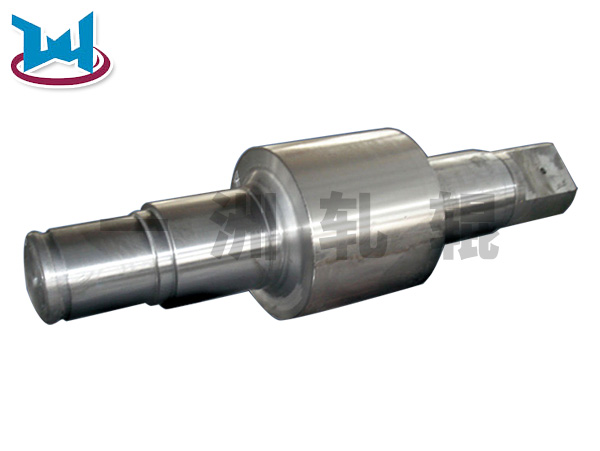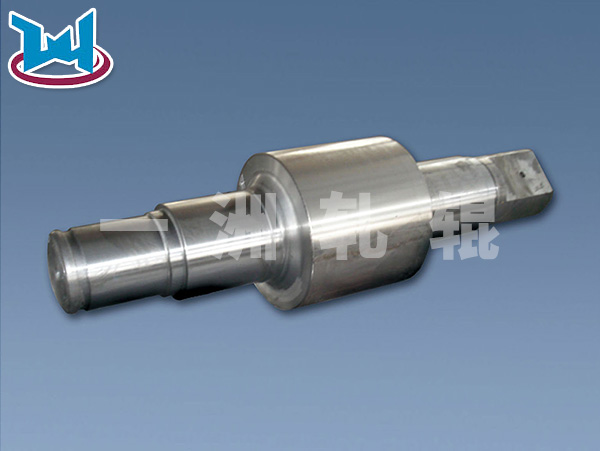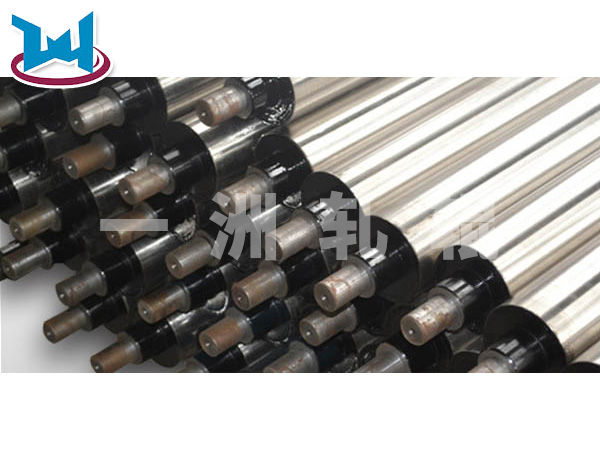Forged steel wash compound roll

The outer layer and core of the roll body (including the roll neck) are made of different materials. The two materials are metallurgical combined rolls. The composite rolls not only meet the requirements of the mill for the wear resistance and thermal fatigue resistance of the roll body, but also ensure the strength and toughness of the core and the roll neck.
The outer layer and core of the roll body (including the roll neck) are made of different materials. The two materials are metallurgical combined rolls. The composite rolls not only meet the requirements of the mill for the wear resistance and thermal fatigue resistance of the roll body, but also ensure the strength and toughness of the core and the roll neck.
Product DetailsPurpose:
The outer and core materials are mainly selected according to the specific requirements of the roll stand for its performance. The commonly used outer materials of composite rolls are chilled cast iron, unbounded chilled cast iron, nodular cast iron, high chromium cast iron, alloy steel, semi-steel, high chromium steel, high speed steel, cemented carbide, etc. The common materials of core are grey cast iron, nodular cast iron, cast steel and forged steel.
Composite rolls are widely used in various rolling mills, such as finishing work rolls of hot strip mills, backup rolls of strip mills, middle and finishing work rolls of profiled steel tube mills, etc. Some roll sleeves of combined rolls are also composite, such as horizontal rolls of H-beam mill, tension reducing rolls of steel tube mill, etc.
Manufacture:
There are many ways to manufacture composite rolls. The main methods are as follows:
(1) Casting method. It includes centrifugal casting method for solidification of roll body in high-speed rotating casting mould, overflow method or washing method for hard metal liquid which is not solidified in the core of roll during solidification with soft and tough metal liquid, bottom leakage method, partition method for placing partition plate in casting mould and pouring partition plate for roll body and core respectively with corresponding metal liquid, and 20. Continuous Casting Compound (CPC) method of pouring liquid metal into the gap between solid mandrel and annular mould developed in 1990s (see figure).
(2) Welding method. The main methods are surfacing welding, electroslag welding and electroslag melting welding from pouring liquid metal to conductive crystallizer.
(3) Powder metallurgy. It includes the hot isostatic method and Self-propagating Synthesis Method of powder materials and tough mandrels under high temperature and pressure. The latter is a method that the metal and non-metal powder materials which can be synthesized by exothermic reaction are placed in the dry die cavity and ignited to produce Self-propagating Synthesis reaction, and then pressed to the final roll shape.
(4) Spray deposition. The method of atomizing high alloy content roll body metal liquid into liquid particles under vacuum or argon protection and depositing them on the roll mandrel. (5) Forging compound ingot method. The selection of composite process depends on the material quality of outer layer and core of the roll body, the size and shape of the roll and the manufacturing cost.
Centrifugal casting characteristics:
Compared with conventional rinsing method and integral casting method, centrifugal casting composite roll has the following characteristics:
(1) The yield of liquid metal is obviously increased. For high chromium cast iron rolls, the difference of yield is more wide, generally 70% and 20%. It can be seen that centrifugation can significantly improve the yield of liquid metal, reduce the amount of liquid metal and reduce the cost.
(2) Save a lot of alloy materials. The outer layer of centrifugal casting composite roll is made of high alloy material to ensure the service performance of the roll. The core of the roll is made of cheap gray cast iron, nodular iron or cast steel. The weight of the core of the roll is obviously larger than that of the roll body. Therefore, the production of composite roll by centrifugal casting can save a lot of alloy materials and reduce the production cost of the roll.
(3) The surface quality of rolls has been significantly improved. The roll produced by conventional method has many casting defects, such as coarse structure, sand hole, sand inclusion and looseness, due to the large amount of liquid metal used in the outer layer and slow solidification. In the centrifugal casting of composite rolls, the thickness of outer layer is easy to control, the amount of liquid metal is small, the solidification speed is fast, and the effect of centrifugal force, the outer layer solidifies dynamically, and gas and non-metallic inclusions are easily discharged from liquid metal. Therefore, the outer layer of composite rolls by centrifugal casting is fine, compact and has few casting defects. High mechanical properties.
(4) The use effect of rolls has been significantly improved. Compared with flushing composite roll, centrifugal composite roll has the characteristics of uniform hardness and small drop in neck hardness, so its service life is obviously improved. The rolling quantity of centrifugal composite roll is 43% higher than that of flushing composite roll, and the usage times are 40% higher than that of flushing composite roll.
(5) High production efficiency, simple operation and easy control of product quality. In addition, the composite roll produced by centrifugal casting has the advantages of deeper hardening layer and smaller residual stress.
Next:None





 Focus on us
Focus on us